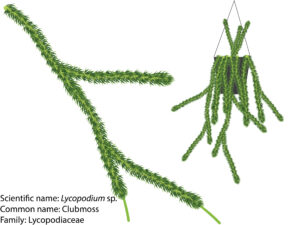
Clubmoss Diversity: A Closer Look at the Fascinating Varieties of Lycopodium
Clubmoss, belonging to the family Lycopodiaceae, is widespread in moist regions around the world. With over one hundred species in this genus, these plants are ancient and have ancestors that dominated the world’s vegetation approximately 250 million years ago, along with the ancestors of horsetails (Equisetum). They are considered more primitive than ferns but more advanced than mosses. Clubmosses vary in size, ranging from tiny thread-stemmed plants found in boggy areas below heath, to large […]
Read More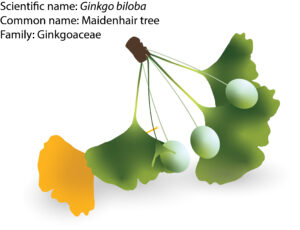
Ginkgo biloba: From Living Fossil to Modern Wonder
The Ginkgoales, which are deciduous seed-bearing plants more primitive than the conifers and even more ancient, first appeared in the Permian Period (about 300 million years ago) and thrived throughout the Jurassic and Cretaceous periods. Approximately 100 million years ago, they began to decline, leaving the maidenhair tree as the sole survivor in the family Ginkgoaceae, and only in China. Therefore, it is known as a living fossil, as the rest of the species in […]
Read More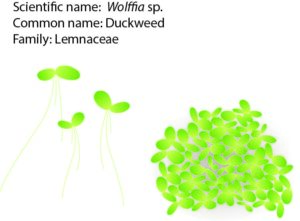
The smallest plant in the world – Duckweed
Duckweed species are the most miniature flowering plants with minute sizes from 0.5 millimeters to less than two centimeters. They are commonly known as water lentils or water lenses, a subfamily of flowering aquatic plants. Allied to Lemna, this is a genus of eight species of floating aquatics distributed over most of the tropical to warm-temperature regions of the world. They are among the most miniature known flowering plants, having minuscule, bright green plant bodies […]
Read More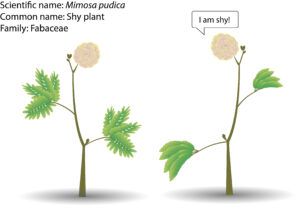
The shy ones from bean family- Mimosa
A large and diverse genus consisting of about four hundred and eighty species is found from Mimosa that is allied to Acasia. Mimosa is a genus of an annual and evergreen perennial plant, categorized as a shrub and small tree under the family of Fabaceae. Unlike animals, plants are sessile, which are often regarded as immotile organisms. Plants do have slow movements that show apparent movement when the growth or movement are recorded using timelapse. […]
Read More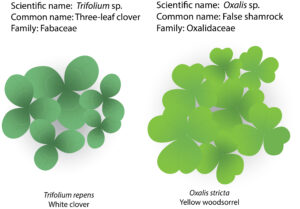
St Patrick’s Day!
Saint Patrick’s Day was made an official Christian feast day in the early seventeenth century and is observed by the Catholic Church. It is a public holiday in the Republic of Ireland, Northern Ireland, the Canadian province of Newfoundland and Labrador, and the British Overseas Territory of Montserrat. According to St. Patrick’s Day lore, Patrick used the three leaves of a shamrock to explain the holy trinity: the Father, the Son, and the Holy Spirit. […]
Read More
The importance of water in plant
The myth that how life is formed is considered as many aspects are involved, but water is one of the most important elements, both at the early stage and the lately evolution of life. Water is not just participate as the building blocks, but also as the director, the medium and the regulator. Every organism needs water in the form of liquid or gas. How long can we survive without the water, H2O? The study […]
Read More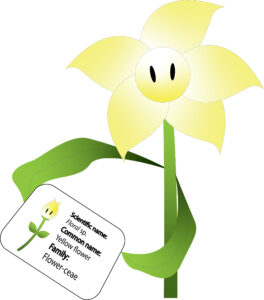
What is your name? – Plant taxonomy
What is your name? You get an immediate response out of a crowd whenever calling somebody’s name. We establish connections and start bonding with each other by our names. However, plants can never respond by calling their names. But still, plants are meaningful to us, such as rose is love, lotus is enlightenment, tea is refreshment, rice is fertility. We learn the names of Plants through books, friends, and the attached “name tags’ from supermarkets […]
Read More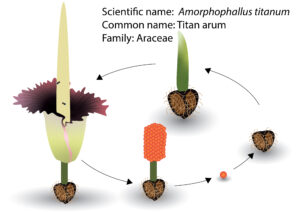
The corpse flower, the giant inflorescence in the world – Amorphophallus titanum
The largest flower is Rafflesia. Do you know what the largest inflorescence in the world? Yes, the answer is Amorphophallus titanium that is commonly known by the public as the corpse flower. Amorphophallus titanium is the largest inflorescence consisting of a sizeable encircling bract or known as spathe, purple from the center of which emerges a fleshy spike tiny flower. It is categorized as monoecious in which the male and female flowers arranged in a […]
Read More